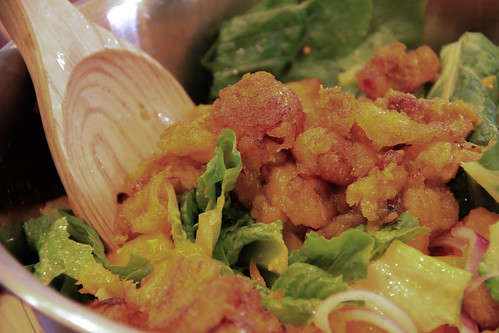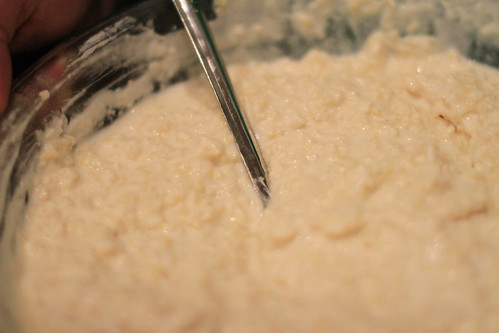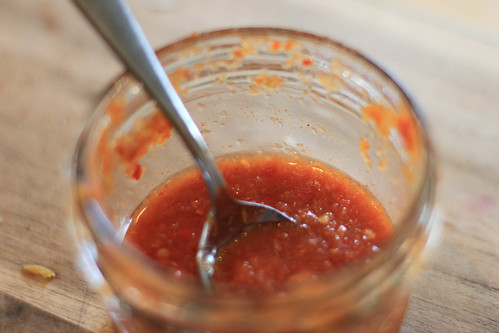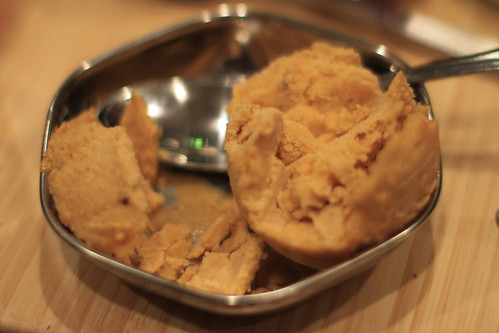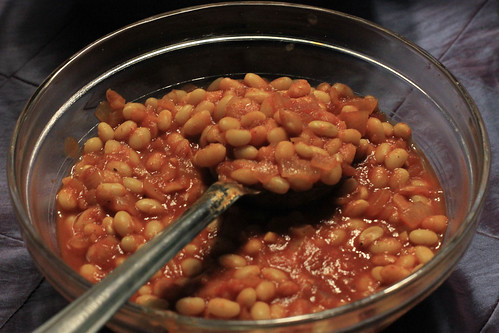
What happens when an uninhabited tropical island in the Indian Ocean suddenly gets people of various backgrounds showing up? Well, aside from other things including the extinction of the dodo, a complex and delicious cuisine emerged in Mauritius. French, Indian, and Chinese cuisines, plus rich soils, waters, and a longstanding sugarcane industry, make for an abundant cuisine whose variety far outpaces the island's modest population. Mauritians are also enthusiastic about their cuisine to the extent that there are a lot of recipes out there, so it was tough to pick out what to cook!
The evening's guests included: Julie, Julie's mom, Levi, the Tenenbaum/Ellenby family, Marguerite, Kristin, Rene, Kerri, and their companions.
Alooda | Fruity chewy milk | Recipe
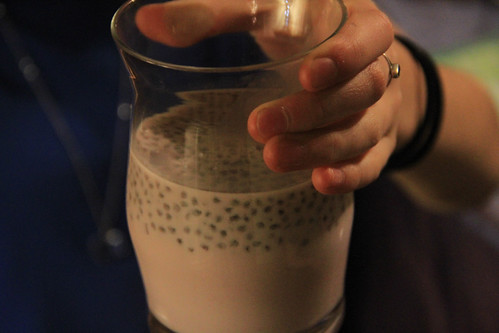
If you think plain ol' milk could use a little more flavor and a lot more texture, then this is the drink for you. This recipe is essentially the same in name and recipe to the South Indian falooda, with fruit syrup adding color and flavor, and various confections adding texture, in this case basil seeds and diced agar-agar. The basil seeds (on the right) in particular are crazy: one tablespoon soaked in warm water can grow to close to a cup in size, with those tiny black seeds absorbing a nearly unbelievable amount of water.

As far as the fruit, I couldn't find the sort of commercially-produced fruit syrup that's commonly used for this sort of thing these days, so I made one from scratch with frozen strawberries.
The result of the concoction was as you might imagine: tasty flavor, really odd texture.
Rougaille | Tomato sauce | Recipe

This is a really simple dish, just some tomatoes simmered with some pungent veggies and gentle herbs, that plays an outsized role in Mauritian cuisine. It's so versatile as a side dish, a condiment, or a simmer sauce. As with so many simple yet fundamental dishes, the quality of ingredients, as well as the choice to add or remove an ingredient, makes a big difference in the result. I particularly enjoyed the addition of curry leaves, which added an exotic flavor to a dish composed of otherwise familiar ingredients.
Gateaux piments | Spicy split pea fritters | Recipe
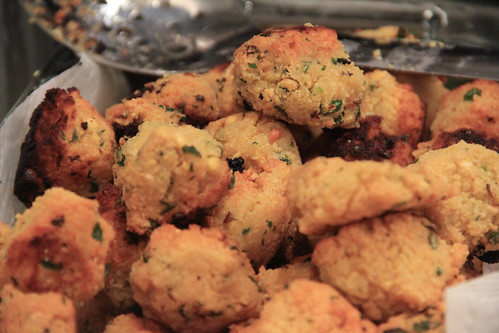
While the name means "pepper cakes," the bulk of these little fried balls is yellow split peas. But instead of being really mushy as we've come to expect from cooked peas, these are instead merely soaked before being ground. The result is a somewhat grainy texture that makes for a great frying surface on the outside, and an interior that holds together while still having a bit of cornmeal-style grit. If I were in Mauritius I'd eat these things from street stalls all the darn time. Perhaps wrapped up in a...
Dholl puri | Yellow split pea flatbreads | Recipe
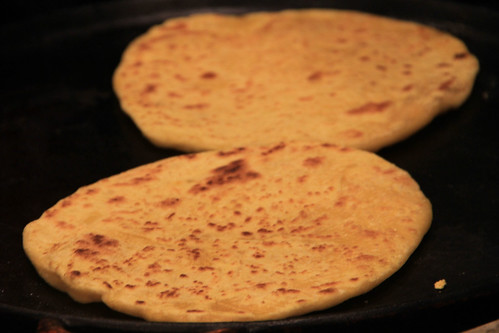
Another dish, another novel use for split peas. This time, it's as a part of flatbreads. The name is a bit deceiving: puri is a pan-Indian term for a puffy, fried bread made of a simple wheat dough, but these are cooked dry more like chapati. These were quite flavorful, with the cooked and ground peas contributing color, flavor, and texture, a great all-purpose protein-and-starch powerhouse to accompany the rest of the meal. Big thanks to Deena for her excellent stuffing, rolling, and pan-toasting skills.
Achards | Pickles | Recipe
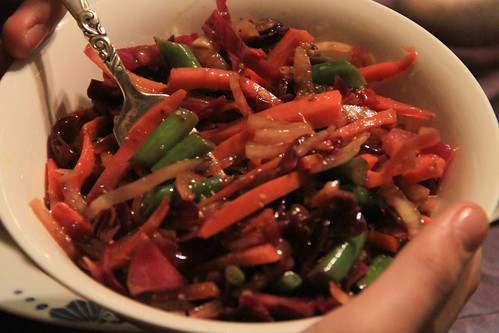
Crisp, tangy vegetables make a nice contrast to the generally soft foods of this meal. Gotta say, though, that mine turned out pretty boring and I'm not quite sure why. Maybe I didn't let them marinate long enough?
Cari poisson | Fish curry | Recipe

Often, fusion food is delightfully brash: a Korean taco, for instance, is a tastebud-jarring collision of two very different culinary traditions. A Mauritian curry is of the subtler cross-cultural variety. Picture a standard tomato-onion-curry powder sauce, with some sort of protein in it...yet also with fresh herbs! I've never seen thyme and parsley in an Indian dish, let alone fresh, but once you consider what a French cook would add to a tomato-and-onion base, it makes sense. The fresh herbs and powdered spices blend in a complex yet complementary manner. This was a darn good dish, spooned into some of that dholl puri!
Gateau la cire | Chinese New Year cake |Recipe
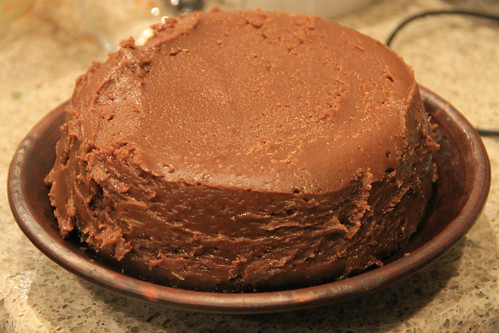
Mauritius has a small, but culinarily influential, Chinese population. This meal fell right in the middle of Chinese New Year celebrations, the perfect time to try out this dessert. While I've seen hints of versions with other additions such as dried fruits, I stuck with what as far as I can tell is the traditional version, flavored with nothing but sugar. Luckily, I was able to find real Mauritian sugar, the "dark muscovado" type with the full molasses content, and a quite complex flavor with hints of various spices, retained. (Weirdly, most of what we know as "brown sugar" is actually white sugar with a bit of molasses added back in.)
The direct translation of the French name "wax cake," and that's a pretty close description of the texture, which is not a surprise given that it's sticky rice flour steamed for hours. It was acceptably tasty, thanks to the proper sugar, but really interesting enough to want to try again.

